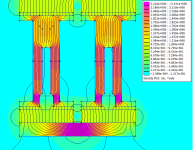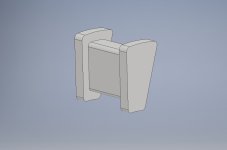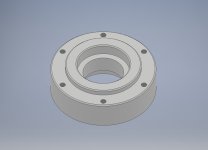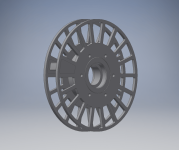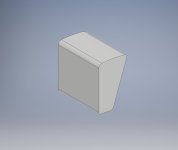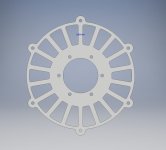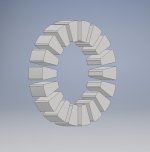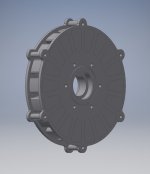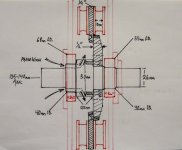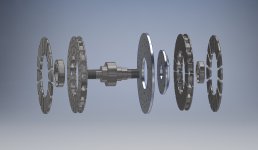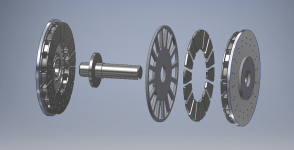The support ring for the cores should go all the way to the outer edge for the most support. If the support ring was fairly thick aluminum, it could be used to carry heat away from the cores if it was attached to the housing. Water cooling could even be done by having channels or tubes on the support ring.
The magnet forces on the cores will be pretty extreme and a collision when assembling could easily crack a core.
If the cores were wound and then saturated with epoxy, the copper would add quite a bit of strength.
If the holes in the cores are counter bored so the screw heads are down a ways from the face, the flux will tend to go around the hole and minimize eddy currents in the screws. Non magnetic stainless or titanium should be good. If the cores are aligned on both sides, you might have an issue with the screws not having enough threads engaged. A nut on one side might work, but nuts will take a really big hole. One option would be to offset the cores from one side to the other so the screws can avoid each other. The rotors would need to be offset by the same amount so the phasing is the same on both sides.
The magnet forces on the cores will be pretty extreme and a collision when assembling could easily crack a core.
If the cores were wound and then saturated with epoxy, the copper would add quite a bit of strength.
If the holes in the cores are counter bored so the screw heads are down a ways from the face, the flux will tend to go around the hole and minimize eddy currents in the screws. Non magnetic stainless or titanium should be good. If the cores are aligned on both sides, you might have an issue with the screws not having enough threads engaged. A nut on one side might work, but nuts will take a really big hole. One option would be to offset the cores from one side to the other so the screws can avoid each other. The rotors would need to be offset by the same amount so the phasing is the same on both sides.



